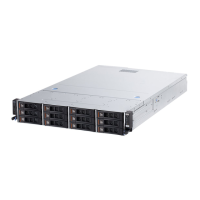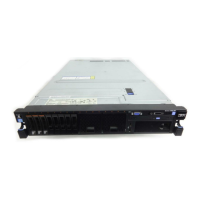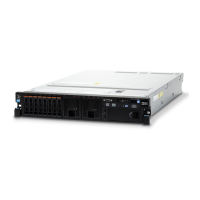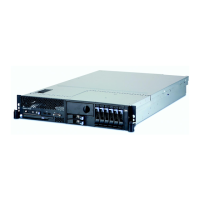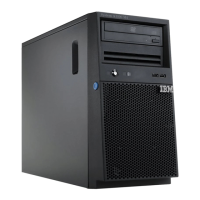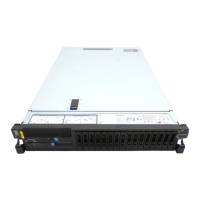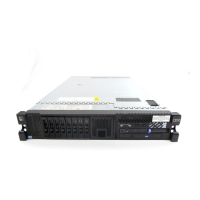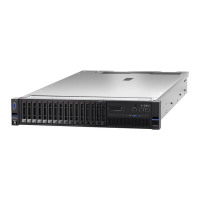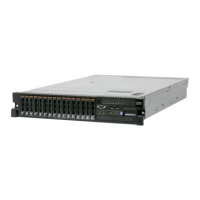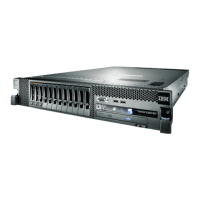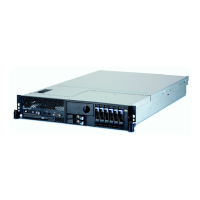use the Setup utility to configure the server to use a dedicated systems
management network or a shared network.
The following illustration shows the LEDs on the rear of the server.
Ethernet
activity LED
Ethernet
link LED
AC power
LED (green)
Power-on
LED (green)
Locator LED (blue)
System-error
LED (amber)
DC power
LED (green)
Power-supply
error LED (amber)
The following illustration shows the LEDs on a dc power supply.
Ethernet activity LEDs:When these LEDs are lit, they indicate that the server is
transmitting to or receiving signals from the Ethernet LAN that is connected to the
Ethernet port.
Ethernet link LEDs: When these LEDs are lit, they indicate that there is an active
link connection on the 10BASE-T, 100BASE-TX, or 1000BASE-TX interface for the
Ethernet port.
AC power LED: Each hot-swap power supply has an ac power LED. When the ac
power LED is lit, it indicates that sufficient power is coming into the power supply
through the power cord. During typical operation, the ac power LEDs are lit. For any
other combination of LEDs, see the Problem Determination and Service Guide on
the IBMDocumentation CD.
DC power LED: Each hot-swap power supply has a dc power LED and an ac
power LED. When the dc power LED is lit, it indicates that the power supply is
supplying adequate dc power to the system. During typical operation, both the ac
and dc power LEDs are lit. For any other combination of LEDs, see the Problem
Determination and Service Guide on the IBM Documentation CD.
IN OK power LED: Each hot-swap dc power supply has an IN OK power LED.
When the IN OK power LED is lit, it indicates that sufficient power is coming into
the power supply through the power cord. During typical operation, both the IN OK
and OUT OK power LEDs are lit. For any other combination of LEDs, see the
Problem Determination and Service Guide on the IBM System x Documentation
CD.
Chapter 2. Introduction 13
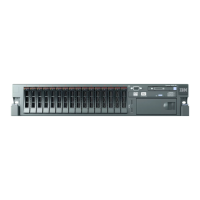
